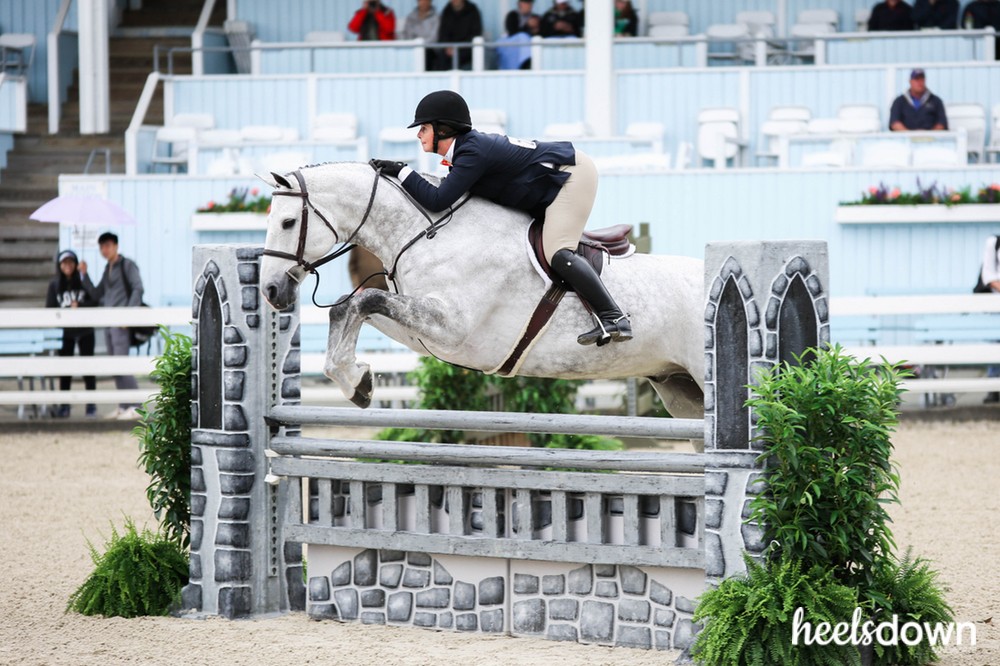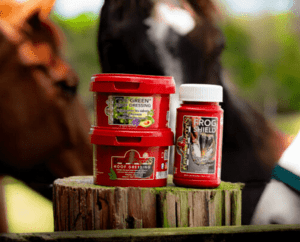How to Dress Your Horse: Hunters

“We need to talk about your flair.”
So says the manager of the fictional restaurant Chotchkie’s to Jennifer Aniston’s character in the cult classic “Office Space.” And there are probably a few hunter trainers who say the same thing to their students as well. While tack and equipment with blingy flair is usually kept to a minimum in the hunter ring out of deference to conservative tradition, it’s not exactly illegal. So what is legal — and not?
The following information is according to USEF rules and guidelines. If you’re showing outside of the United States, consult your national federation’s rulebook. Check your local circuit’s rules as well, as they may differ.
Bridles and Bits
Regular snaffle, pelham, and full bridles — all with cavesson nosebands — are hunter-approved. Illegal? Drop nosebands, flashes, and figure eights.
While dee-ring snaffles are the most commonly seen bit type in the hunter ring, plenty of other styles are perfectly legal. Feel free to use pelham bits, eggbutts, loose rings, and full-cheek snaffles — but gags (except hunter gags), hackamores, three-ring bits, et cetera are illegal. Note that the use of the phrase “et cetera” is actually in the rulebook, so it’s best to steer clear of most leverage bits besides pelhams. If you’re unsure about any tack, ask the show steward.
For bit mouthpieces, just about anything goes. Single-jointed, double-jointed, rollers, twisted wires, French links, lozenges, Dr. Bristols, Waterfords, mullen mouths, corkscrews, and so many more styles…. all legal. If it’s a snaffle bit, go for it.
A word of caution: Just because a bit, bridle, or other piece of tack is legal, it doesn’t mean that its use can’t affect your placings. Judges may penalize riders for “unconventional” tack such as kimberwickes, hunter gags, hackamores, and bits with hooks or slots for fixed reins. Note that some judges don’t like converters on pelhams as well.
Saddles
For non-side-saddle hunter classes, there is no mention of any kind of saddle requirements or restrictions in the rulebook. You are free to pick the saddle that suits you and your horse best, and in any color. Black tack is legal! No rules regarding decorative adornment exist either, so blingy saddles and bridles are completely legal. Though, again, judges may look askance at tack that looks unconventional for the ring. Turnout can factor into judges’ placings, so if ribbons are important to you, use caution — and try to blend in. Be a lemming.
Saddle Pads
There are zero rules regarding saddle pads for hunters. So, technically speaking, any color, material, or style is legal. While you can do your own thing if you wish, conservative is typically best. Most commonly seen are white fleece or sheepskin shaped pads, or white number-holder pads on some breed circuits. If you choose to use anything outside of those styles, be forewarned that you’re going to stand out — likely in a bad way.
Martingales
If you haven’t shown in the hunter ring in a while, it may surprise you to learn that running martingales are explicitly legal in over fences classes. Standing martingales are still most commonly seen, though, and are also legal. Any other kind of martingale besides standing or running is grounds for elimination.
In flat/hack classes, no martingales are allowed.
Boots and Wraps
Don’t even think about it (unless there’s a torrential downpour, and then show management may allow bell boots).
Other Equipment
Leave your horse’s nasal strips at homes (or maybe take up eventing). For whips, let it be non-weighted and 30 inches long or less, and you’re golden.
And, for the love of all that is holy and horsey, don’t tie your feet to your stirrups or leathers in any manner. Not only is it illegal, but it’s also unsafe!


